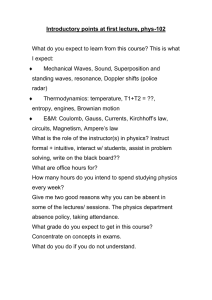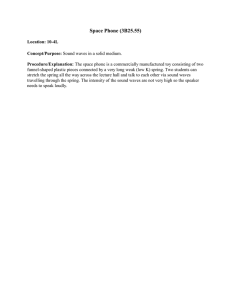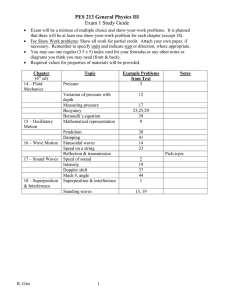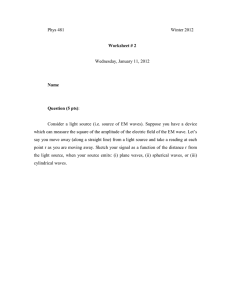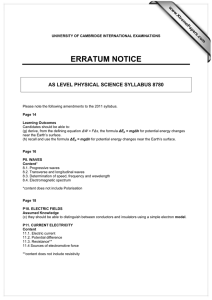Exam Study Guide
advertisement
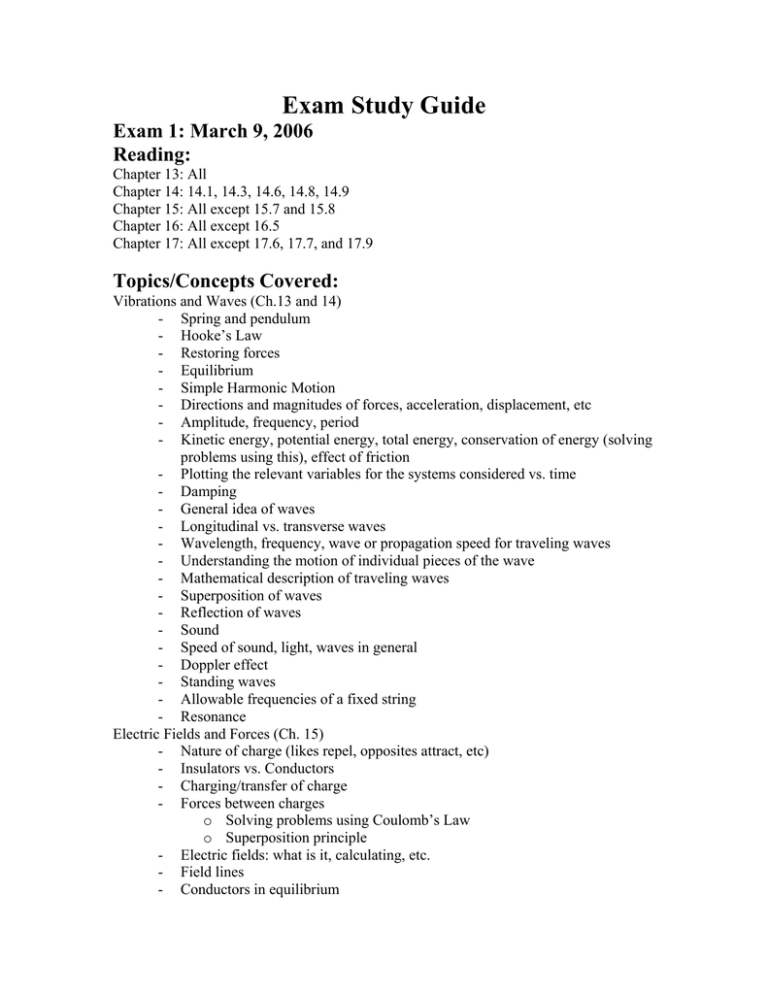
Exam Study Guide Exam 1: March 9, 2006 Reading: Chapter 13: All Chapter 14: 14.1, 14.3, 14.6, 14.8, 14.9 Chapter 15: All except 15.7 and 15.8 Chapter 16: All except 16.5 Chapter 17: All except 17.6, 17.7, and 17.9 Topics/Concepts Covered: Vibrations and Waves (Ch.13 and 14) - Spring and pendulum - Hooke’s Law - Restoring forces - Equilibrium - Simple Harmonic Motion - Directions and magnitudes of forces, acceleration, displacement, etc - Amplitude, frequency, period - Kinetic energy, potential energy, total energy, conservation of energy (solving problems using this), effect of friction - Plotting the relevant variables for the systems considered vs. time - Damping - General idea of waves - Longitudinal vs. transverse waves - Wavelength, frequency, wave or propagation speed for traveling waves - Understanding the motion of individual pieces of the wave - Mathematical description of traveling waves - Superposition of waves - Reflection of waves - Sound - Speed of sound, light, waves in general - Doppler effect - Standing waves - Allowable frequencies of a fixed string - Resonance Electric Fields and Forces (Ch. 15) - Nature of charge (likes repel, opposites attract, etc) - Insulators vs. Conductors - Charging/transfer of charge - Forces between charges o Solving problems using Coulomb’s Law o Superposition principle - Electric fields: what is it, calculating, etc. - Field lines - Conductors in equilibrium - Electric flux - Gauss’s law - Atomic description of charge Electric Potential Energy, Electric Potential, Capacitance (Ch. 16) - Work and potential energy in electric fields - Analogy with gravitational systems - Electric potential/potential difference - Uniform, constant electric fields - Calculating the potential energy and potential for a system of point charges - Equipotential surfaces and the potential on a charged conductor in equilibrium - Batteries - Capacitance o General idea o Parallel plate capacitor o Dielectrics and dielectric breakdown o Parallel and series combinations of capacitors o Energy stored in a capacitor Current and Resistance (Ch.17) - Current - Drift velocity and relation to current - Analogies for current flow and voltage - Resistance - Ohm’s Law - Ohmic vs non-Ohmic materials - Resistivity - Electrical energy and power Equations Fspring = -kx PEspring = ½ kx2 Tspring = 2π√(m/k) x(t) = A cos (ωt) f = 1/T v(t) = -Aω sin(ω t) a(t) = -Aω2 cos(ω t) ω=2πf v = √(T/µ) (for a string) E = kq1q2/r2 Tpendulum = 2π√(L/g) v = λf fo = fs(v+vo)/(v-vs) F = kq1q2/r2 flux = EA (E perp. to area) flux = Qencl/εo (Gauss’s Law) ∆V = Vb - Va = ∆PE/q PE(r) = kq1q2/r C = Q/ ∆V Ecap = ½ Q ∆V R = ∆V /I = ρ L/A E = F/q ∆PE = -Wab = -qE∆x V(r) = kq/r W = - ∆PE C = εoA/d C = kCo P = IV
